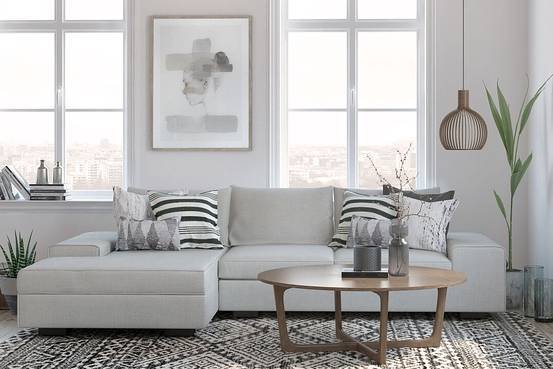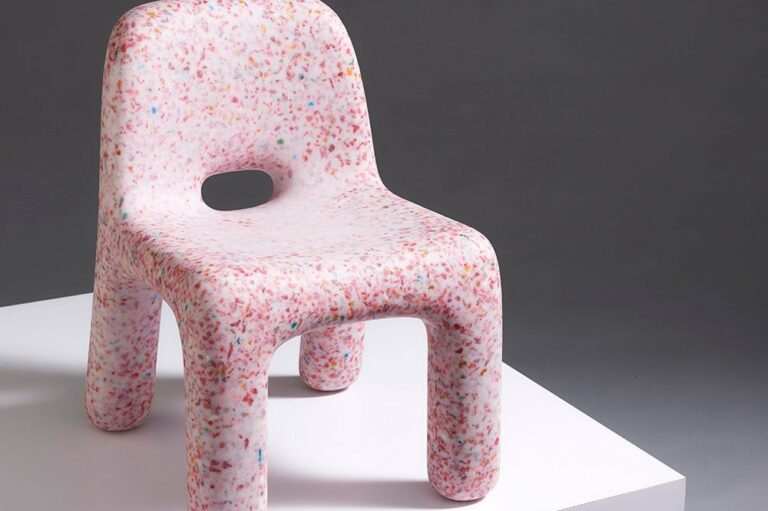Choosing Eco-Friendly Stain-Resistant Furniture For Dining: A Guide
Today we discuss Eco-Friendly Stain-Resistant Furniture For Dining. If you’re in the market for eco-friendly dining room furniture that can handle stains and spills, you’ve landed on the right page! Balancing sustainability and durability might feel daunting, but fret not – we have just the answer for you.
This guide will walk you through selecting eco-friendly furniture that resists stains and spills, making sure your dining area remains chic and low-maintenance. Whether you’re a busy parent or love hosting guests, we’ve got your back. Let’s explore the realm of eco-friendly dining room furniture!
Eco-Friendly Stain-Resistant Furniture For Dining:
Choosing eco-friendly furniture for your dining room is ideal for reducing environmental impact and promoting a healthier living space. It’s crucial to select furniture that aligns with sustainability goals and provides resistance to stains and spills.
This guide will cover key factors to keep in mind when choosing stain and spill-resistant eco-friendly dining room furniture.
Material Matters: Opt for Sustainable Options
When choosing eco-friendly furniture, start by considering the materials used in its construction. Sustainable options are those that have a minimal impact on the environment and are often recyclable or made from renewable resources. Here are some materials to consider:
a) Wood: Look for FSC-Certified or Reclaimed Wood
Wood is a popular choice for dining room furniture, but not all wood is created equal in terms of sustainability.
Look for dining tables and chairs made from FSC-certified wood, which signifies that it has been responsibly sourced.
Alternatively, consider furniture crafted from reclaimed or salvaged wood, giving new life to old materials.
b) Bamboo: A Fast-Growing and Sustainable Option
Bamboo is an incredibly sustainable material due to its rapid growth rate. It regenerates quickly, making it an excellent choice for eco-friendly furniture.
Look for bamboo dining sets that have been responsibly harvested and manufactured without harmful chemicals.
c) Recycled Materials: Embrace Creativity
Many innovative furniture manufacturers now use recycled materials to create unique and eco-friendly dining sets.
From plastic bottles to reclaimed metals, these furniture pieces not only reduce waste but also add a modern and stylish touch to your dining room.
Non-Toxic Finishes: Protecting Your Health
In addition to sustainable materials, it’s essential to consider the finishes used on your dining room furniture. Many conventional finishes contain harmful chemicals that can off-gas volatile organic compounds (VOCs) into the air, contributing to indoor air pollution and potential health risks. Look for furniture that features:
a) Water-Based or Low VOC Finishes
Opt for furniture with water-based finishes, which are low in harmful chemicals compared to oil-based alternatives. These finishes not only reduce your exposure to toxic substances but also have a lower environmental impact during production.
b) Natural and Organic Finishes
Another option is furniture that uses natural and organic finishes, such as linseed oil or beeswax. These finishes are typically non-toxic, and biodegradable, and enhance the natural beauty of the wood.
Stain and Spill Resistance: Practicality Meets Sustainability
While eco-friendly materials and finishes are crucial, it’s equally important to choose furniture that can withstand the daily wear and tear of spills and stains.
Look for the following features to ensure your dining room furniture remains resistant to spills and stains:
a) Stain-Resistant Fabrics: A Practical Choice
When selecting dining chairs with upholstered seats, search for fabrics that have been treated with a stain-resistant finish.
These finishes create a protective barrier, making it easier to clean up spills and prevent stains from setting into the fabric.
b) Easy-to-Clean Surfaces: Durability and Convenience
Consider dining tables with surfaces that are easy to clean. Smooth and non-porous materials, such as glass, ceramic, or certain types of laminates, are less likely to absorb spills, making cleanup a breeze. Avoid materials with intricate crevices or rough textures that can trap dirt and stains.
c) Protective Coatings: Enhancing Durability
Some eco-friendly furniture features protective coatings that enhance its resistance to stains and spills. For example, a dining table with a clear polyurethane coating can prevent liquids from seeping into the wood, making it easier to clean up any accidental spills.
Consider Functionality and Style:
Apart from eco-friendliness and stain resistance, it’s crucial to choose dining room furniture that matches your functional and aesthetic requirements. Consider the following aspects:
a) Size and Shape: Fit for Your Space
Ensure your dining table and chairs are the right size and shape for your dining room. Measure the available space and consider how many people you usually accommodate. Rectangular, round, or square tables each offer unique benefits, so choose what suits your needs best.
b) Comfort: Enjoyable Dining Experiences
Comfort is essential for a pleasant dining experience. Look for chairs with adequately shaped seats and supportive backrests. Consider upholstery options that offer both comfort and durability, ensuring your dining room furniture remains comfortable for years to come.
c) Style: Reflect Your Personal Taste
Eco-friendly furniture comes in various styles, ranging from rustic to contemporary. Consider the overall aesthetic of your dining room and select furniture that complements your personal taste while maintaining eco-friendly principles.
Reputable Brands: Trustworthy Eco-Friendly Options
To ensure you are choosing truly eco-friendly furniture, it’s wise to opt for reputable brands that have a strong commitment to sustainability. Look for certifications such as LEED, Greenguard, or B-Corp, as these indicate a brand’s dedication to eco-friendly practices and transparency.
Secondhand and Vintage Options: Reduce, Reuse, Recycle
Consider exploring secondhand or vintage furniture options when furnishing your dining room. Buying pre-owned furniture not only reduces waste but also adds a unique charm to your space. Look for gently used dining sets in thrift stores, online marketplaces, or local classified ads.
Care and Maintenance: Prolonging the Lifespan
Proper care and maintenance can significantly extend the lifespan of your eco-friendly dining room furniture. Here are a few tips:
a) Regular Cleaning
Clean your furniture regularly with a soft cloth or a mild, eco-friendly soap. Avoid abrasive cleaners that can damage the finishes or materials.
b) Preventive Measures
Use coasters, placemats, and tablecloths to protect the surfaces from scratches, spills, and heat, preserving their appearance over time.
c) Quick Response to Spills
Address spills promptly by blotting them gently with a clean cloth or sponge. Avoid rubbing, as it may force the liquid deeper into the material and cause stains.
Ethical Sourcing: Fair Trade and Artisan Crafts
If supporting fair trade and artisan craftsmanship aligns with your values, consider purchasing dining room furniture from brands that prioritize ethical sourcing. These brands often work directly with skilled artisans and communities, ensuring fair wages and sustainable practices.
Eco-Friendly Packaging: Reduce Waste
When purchasing eco-friendly furniture, pay attention to the packaging materials. Opt for brands that use minimal packaging, compostable materials, or recycled packaging to reduce waste and minimize their environmental footprint.
Warranty and Durability: Longevity Matters
Lastly, consider the warranty and durability of your chosen dining room furniture. A longer warranty period indicates the manufacturer’s confidence in their product’s quality, while durability ensures your furniture will withstand everyday use, spills, and stains.
With these considerations in mind, you can confidently select eco-friendly furniture that is resistant to stains and spills for your dining room. Embrace sustainable materials, non-toxic finishes, and functional designs to create a beautiful and environmentally conscious space for enjoyable meals with friends and family.
Faqs for Eco-Friendly Stain-Resistant Furniture For Dining:
Look for furniture made from sustainable materials such as bamboo, reclaimed wood, or recycled plastic. These materials are not only environmentally friendly but also durable and resistant to stains and spills.
Absolutely! Look for fabrics made from natural fibers like organic cotton, hemp, or linen. These fabrics are less likely to stain and can be treated with eco-friendly finishes to increase their resistance to spills.
Choose furniture with water-based finishes or natural oils like tung oil or linseed oil. These finishes are low in VOCs (volatile organic compounds) and provide protection against stains and spills while being environmentally friendly.
Look for certifications such as FSC (Forest Stewardship Council) for wood products or GOTS (Global Organic Textile Standard) for fabrics. Additionally, read product descriptions and labels carefully to determine if the furniture has undergone any stain and spill resistance treatment.
Absolutely! Consider using eco-friendly fabric protectors or applying natural wax or sealants to wooden furniture. These measures can further enhance the resistance of your furniture to stains and spills.
Final Thoughts
When selecting eco-friendly furniture for a dining room that is resistant to stains and spills, there are several key considerations to keep in mind. First and foremost, opt for sustainable materials such as bamboo or reclaimed wood. Look for furniture with finishes that have been treated to repel stains and spills, such as water-based or natural oil finishes. Additionally, consider furniture with removable, washable, or stain-resistant upholstery. By choosing eco-friendly furniture that is resistant to stains and spills, you can create a dining room that is both environmentally conscious and easy to maintain.


